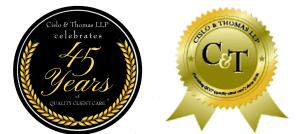Prepared by Cislo & Thomas LLP Attorney Mark D. Nielsen, Ph.D.
1. In a recent decision regarding venue in a patent infringement case, the Northern District of New York held that Amazon Lockers (kiosks where one may pick up or return packages from Amazon) in the district constituted a regular and established place of business such that venue under the patent venue statute is proper. The decision is here. Patent venue may be found in the judicial district in which a company resides (“resides” meaning state of incorporation), or in a place where infringement has taken place and the defendant has a regular and established place of business. Here, because, among other things, Amazon exerted a significant amount of control over its Lockers, because its Lockers had some element of permanence to their locations, and because the Lockers were used in furtherance of Amazon’s core business of product delivery, the Court found that the Lockers demonstrated that Amazon had a regular and established place of business in the Northern District of New York. This ruling would appear to open the door for more nuanced venue arguments by patent infringement plaintiffs where a company is not incorporated in, and does not have offices in, a particular state or judicial district.
2. In another Section 101/Alice patent invalidation case, the District of Delaware likely got this one right when it invalidated a series of patent claims that pertained to collecting information, processing the information, and then in one claim, providing the processed information to a device, ostensibly for further use (although that was not specified in the claim). The decision is here. The patent claims were directed to thermal printers and the performance of the print heads. The claims at issue in the motion to dismiss were simply directed to collecting temperature information and processing the information via mathematical equations. One of the claims (claim 11 of the ‘943 patent) had a providing step in which the processed information was provided to a print head element, but not only was there no detail in the claim regarding how the processed information was used by the print head element used the information, but it was apparently well-known in the prior art and did not contribute to patentability. Perhaps if the claim defined how the information was utilized by the print head element, it would have passed muster under Section 101/Alice. It is of concern, however, that issues of prior art and patentability continue to be dragged into the Section 101 analysis. Although, the Court likely reached the right decision here.
3. In an insurance coverage case out of the Southern District of New York, the Court, based on the language of the particular policy at issue, held that there was no duty to defend a copyright infringement case because although copyright infringement in one’s advertising was alleged, the policy language had a rather narrow exception to the IP exclusion language. The opinion is here. Typical CGL policies may provide for a defense under the “advertising injury” provisions of the policy. There are usually, however, significant exclusions for IP litigation coverage, as in the present case. There are often, however, exceptions to the exclusions that may open up coverage for some copyright and trade dress cases where the infringing activity was in one’s advertising. In this case, the policy language had the additional nuance that the exception to the exclusion only applied in instances in which the “only” allegations of infringement in the case were related to advertising. Because the complaint in the case alleged infringement by means other than “only” advertising, the exception to the exclusion did not apply, and there was no duty to defend. It is imperative that business owners know what type of IP coverages they have in their CGL policies.



